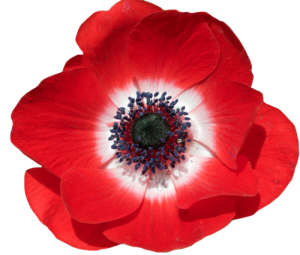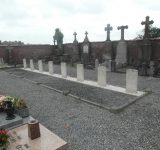Personal Details
Charles John Summers was born in Northrepps, Norfolk on 22nd November 1884 (baptised 11th January 1885), the fourth son of John Henry and Sarah Summers of Northrepps, Norfolk.
Husband to Rosa Beatrice Laccohee Summers (nee Baker) and father to Arthur Charles, Ernest William and Mabel. Rosa and Charles married on 13th January 1902.
The 1911 Census shows Charles as a general labourer.
Charles’ marriage record indicates his age as 21, whilst his actual age was 17!
Charles enlisted in Whitchurch, Shropshire and is commemorated on the Tushingham memoria. We are unable to determine how he came to be in the Whitchurch area. The only possible clue is that he and Rosa do not appear to have had any further children after Mabel (born 1910), and the record of army effects shows his sister Agnes M Eacott as his sole legatee. This might suggest that he and Rosa had separated or divorced.
Military Details
Regiment : 10th Battalion King’s Shropshire Light Infantry
Rank : Private
Service Number : 24010
Killed in action; Belgium 4 November 1918 Aged 33

The British War Medal (also known as 'Squeak') was a silver or bronze medal awarded to officers and men of the British and Imperial Forces who either entered a theatre of war or entered service overseas between 5th August 1914 and 11th November 1918 inclusive. This was later extended to services in Russia, Siberia and some other areas in 1919 and 1920. Approximately 6.5 million British War Medals were issued. Approximately 6.4 million of these were the silver versions of this medal. Around 110,000 of a bronze version were issued mainly to Chinese, Maltese and Indian Labour Corps. The front (obv or obverse) of the medal depicts the head of George V. The recipient's service number, rank, name and unit was impressed on the rim.
The Allied Victory Medal (also known as 'Wilfred') was issued by each of the allies. It was decided that each of the allies should each issue their own bronze victory medal with a similar design, similar equivalent wording and identical ribbon. The British medal was designed by W. McMillan. The front depicts a winged classical figure representing victory. Approximately 5.7 million victory medals were issued. Interestingly, eligibility for this medal was more restrictive and not everyone who received the British War Medal ('Squeak') also received the Victory Medal ('Wilfred'). However, in general, all recipients of 'Wilfred' also received 'Squeak' and all recipients of The 1914 Star or The 1914/1915 Star (also known as 'Pip') also received both 'Squeak' and 'Wilfred'. The recipient's service number, rank, name and unit was impressed on the rim.
Further Information
If you can provide any further information on Charles John Summers please get in touch by leaving a comment below, using our Contact Form or by calling in to Whitchurch Heritage Centre.
Information provided by Whitchurch Museum and Archives


